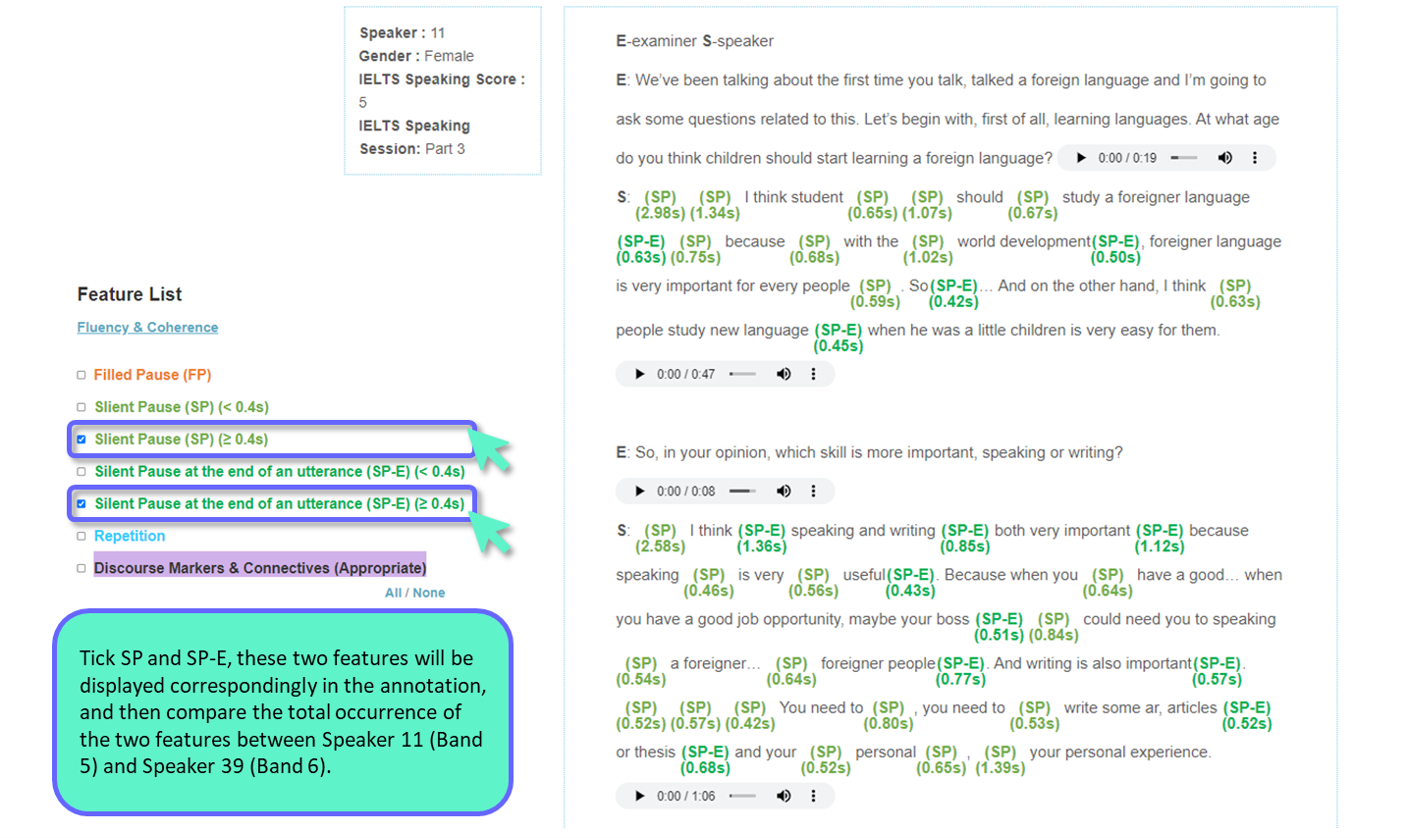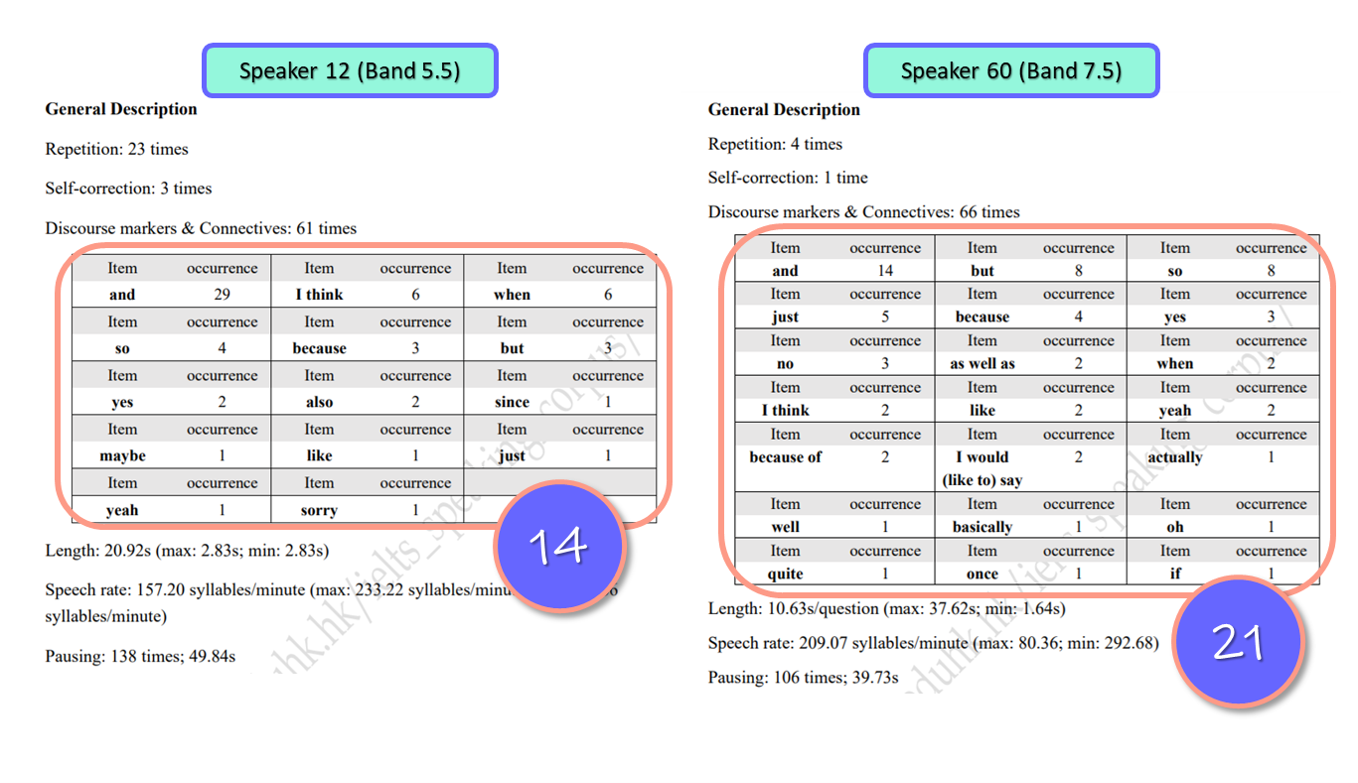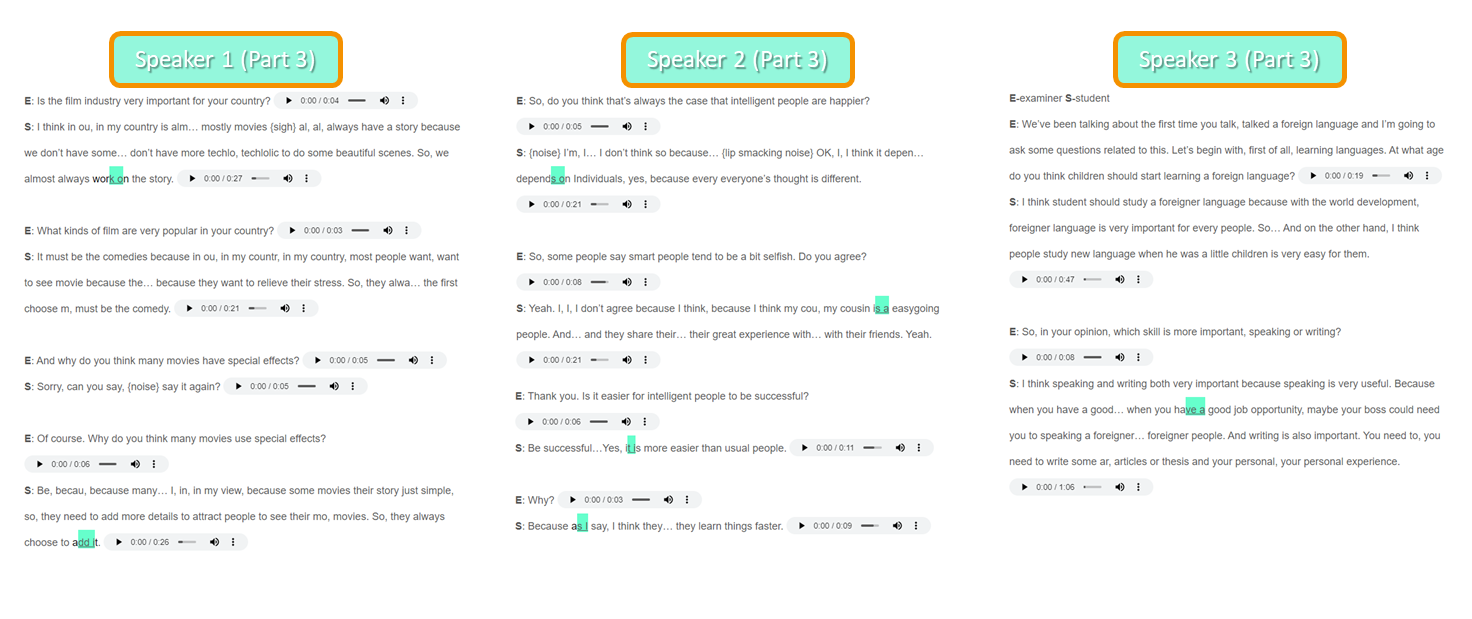♠ Fluency and Coherence
- Pausing
Go to the corpus and use the ‘Browse’ function. Listen to the recordings of Speaker 11 (Band 5, Part 3) and Speaker 39 (Band 6, Part 3).
Please follow the steps below.
Feedback on the question
Take the answers to first two questions responded by Speaker 11 and Speaker 39 as an example, after clicking the target features and comparing, it's obvious that more SP and SP-E are found in Speaker 11.
Now view the full data pages of Speaker 11 and Speaker 39, and observe the position where the SP and SP-E occurs.
- Discourse makers and connectives
Go to the corpus and use the ‘Search’ function.
Please search the target feature (e.g., discourse markers and connectives) step by step as demonstrated below.
And note that you can either choose speakers with different bands separately or click on 'NONE SELECTION' under 'Band' to view speakers with the target feature holistically.
Now, you can start the activity.
Feedback on the question
Follow the steps (1. NONE SELECTION → 2. Fluency and Coherences → 3. Discourse markers and connectives <Appropriate> → 4. Discourse markers and connectives <Appropriate>), next, view the data pages of Speaker 12 and Speaker 60, and then compare the appropriate discourse markers and connectives (DMC)they used.
You can either mark them down by yourself or scroll down to the bottom of the data page to view the general description summarized by us. According to the general desciption, you may find that Speaker 60 tends to employ a wider range of DMC, although almost the equal occurrence of DMC can be found in both speakers, roughly around 60 times.
♣ Lexical Resource
Feedback on the question
Speaker 32, Speaker 33, Speaker 71 and Speaker 72 in the corpus all discussed several general questions related to the topic 'well-known people', therefore you can make a close comparison of lexical resources on the same topic used by learners of different proficiency levels. After comparing the LR annotation of each data page, you may find that Speakers 71&72 employed more less common words (e.g., repercussion, anorexia, bulimia, etc.) and idiomatic expressions (e.g., other than, strikes a chord, etc.) than Speakers 32&33. While for the use of collocations, there is no marked difference among them (ranging from 21 to 26 times).
♥ Grammatical Range and Accuracy
Feedback on the question
Go to the browse page of the corpus and take a look at the GA page of Speaker 32, Speaker 33, Speaker 71 and Speaker 72 respectively. The tickable items under the feature list indicate all the types of features the speaker has. The items in bold normally represent negative features and the items highlighted is considered as positive features. As shown in the illustration below, you may notice that both Speaker 32 and Speaker 33 made a number of grammatical errors, such as inappropriate use of articles, nouns and verbs, incorrect word order, etc. While for proficient learners, there is hardly any grammatical error found. As for the complex verb group, apart from passive voice which can be found in one of the intermediate learners, proficient learners also use 'emphatic do'. [For more information on emphatic do, you can click on the following links: Cambridge Dictionary & ThoughtCo.] In addition to the comparison of features mentioned in the quiz, you may compare the sentence forms and then take a look at the general description which includes a feature summary and suggested answers to each grammatical error.
♦ Pronunciation
- Segmental
Go to the corpus and use the ‘Browse’ function. Listen to the recording of Speaker 22 (Band 5.5, Part 2).
Please follow the steps below.
Feedback on the questions
- Suprasegmental
Go to the corpus and use the ‘Search’ function.
Please search the target feature (e.g., consonant-vowel linking) step by step as demonstrated below.
And note that you can either choose speakers with different bands separately or click on 'NONE SELECTION' under 'Band' to view speakers with the target feature holistically.
Now, you can start the activity.
Feedback on the questions
Follow the steps (1. Band 5 → 2. Pronunciation →3. Consonant-vowel linking → 4. Consonant-vowel linking), next, view the data pages of Speakers 1, 2 and 3, and then count occurrences of their CV linking features separately.
The search procedure is the same as that used in Question 1.
Below are the data pages of Speakers with Band 7:














